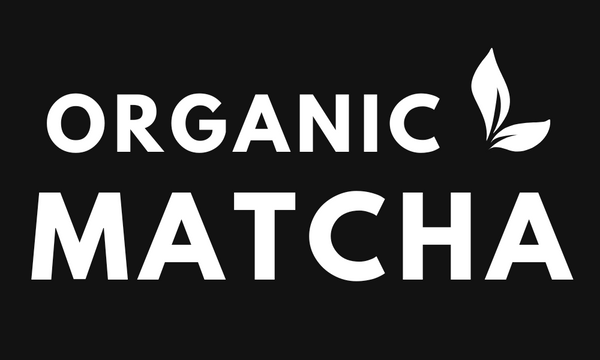
What is matcha - and how is it different from regular green tea?
Share
Literally translated, matcha means “powdered tea.” Its top-grade varieties are cultivated in Japan, where it first appeared 1,000 years ago as a central element of the Japanese tea ceremony. Today, matcha is a beloved part of Japanese culture, not only consumed as a hot or cold drink but also used in a wide array of pastries and desserts.
If you’ve been browsing wellness trends or exploring healthier drink options, you’ve probably seen the glowing green froth of matcha everywhere—from cozy coffee shops to Instagram feeds. But what exactly is matcha? And how is it different from the regular green tea you might already know? Let’s dive into the vibrant world of matcha and uncover why this Japanese super-tea is winning hearts around the globe.

So, what is matcha?
Matcha is a finely ground powder made from specially grown and processed green tea leaves. But unlike regular green tea, where you steep the leaves and discard them, matcha allows you to consume the entire tea leaf - giving you a stronger, richer, and more nutrient-packed experience.
Matcha is traditionally grown in Japan (think Kyoto and Uji), where tea farmers use a unique cultivation technique: the tea bushes are shaded for 20–30 days before harvest. This boosts the chlorophyll and amino acid levels, giving matcha its vivid green color and signature umami taste.
A leaf like no other
Matcha comes from the same plant as green tea - Camellia sinensis - but that’s where the similarities start to diverge. The journey of a matcha leaf is far more intentional. About a month before harvest, the tea plants are shaded from direct sunlight. This small shift in their environment triggers a powerful transformation: the leaves deepen in color, their chlorophyll levels rise, and they begin to develop a higher concentration of amino acids, especially L-theanine - a compound known for promoting relaxation and focus.
Once harvested, these leaves are steamed, dried, and carefully de-veined and de-stemmed. What remains is the most tender part of the leaf, which is then ground into a fine, vibrant green powder: matcha.

The matcha ritual
Unlike most teas where the leaves are steeped in hot water and discarded, matcha is unique. You don’t infuse it - you consume the entire leaf in powdered form. This makes matcha incredibly rich, both in flavor and in nutrients.
To prepare it, you whisk a small amount of the powder into hot water until it becomes frothy and smooth. The result is an earthy, creamy drink that’s unlike anything else. There’s a ceremonial elegance to the process, whether you're using a traditional bamboo whisk or simply shaking it up in your kitchen.
And the flavor? It’s bold yet balanced - slightly grassy, a little sweet, with a satisfying depth that lingers. It's a taste that grows on you, especially if you’re someone who appreciates quality and mindfulness in your everyday rituals.
Energy, but make it gentle
One of the reasons people fall in love with matcha is the way it makes them feel. Yes, matcha contains caffeine - usually around half the amount of a cup of coffee - but it behaves very differently. That’s thanks to L-theanine, which works synergistically with caffeine to give you a calm, focused energy. No jitters. No crash. Just clarity.

Because you're drinking the entire leaf, you’re also getting more antioxidants than with regular green tea - especially a powerful one called EGCG, which is linked to supporting metabolism, reducing inflammation, and even boosting brain function. It’s this unique blend of mental alertness and physical calm that makes matcha so popular among meditators, creatives, students, and anyone looking to feel a little more centered.
More than a drink
Matcha doesn’t just live in teacups anymore. It’s become a star ingredient in smoothies, lattes, desserts, and even skincare. Its versatility makes it easy to incorporate into daily life, whether you’re enjoying a quiet morning ritual or adding a nourishing twist to your favorite recipes.
 But it all starts with the quality of the matcha. The best matcha - usually labeled as “ceremonial grade” - has a rich green color, a delicate texture, and a naturally smooth flavor. It’s harvested from the youngest leaves and is meant to be enjoyed in its purest form, with just hot water and your full attention.
But it all starts with the quality of the matcha. The best matcha - usually labeled as “ceremonial grade” - has a rich green color, a delicate texture, and a naturally smooth flavor. It’s harvested from the youngest leaves and is meant to be enjoyed in its purest form, with just hot water and your full attention.
Why matcha, why now?
If you’ve been curious about matcha, now is the perfect time to try it. It’s more than just a trend - it’s a centuries-old tradition that’s been passed down through Japanese tea ceremonies and lovingly modernized for today’s wellness seekers.
Choosing matcha means slowing down for a moment. It means investing in yourself, not just through what you consume but how you consume it. It’s a way to feel awake, alive, and present - all in one little cup of green.
So if you’ve been wondering what matcha is all about… maybe it’s time to find out for yourself.
